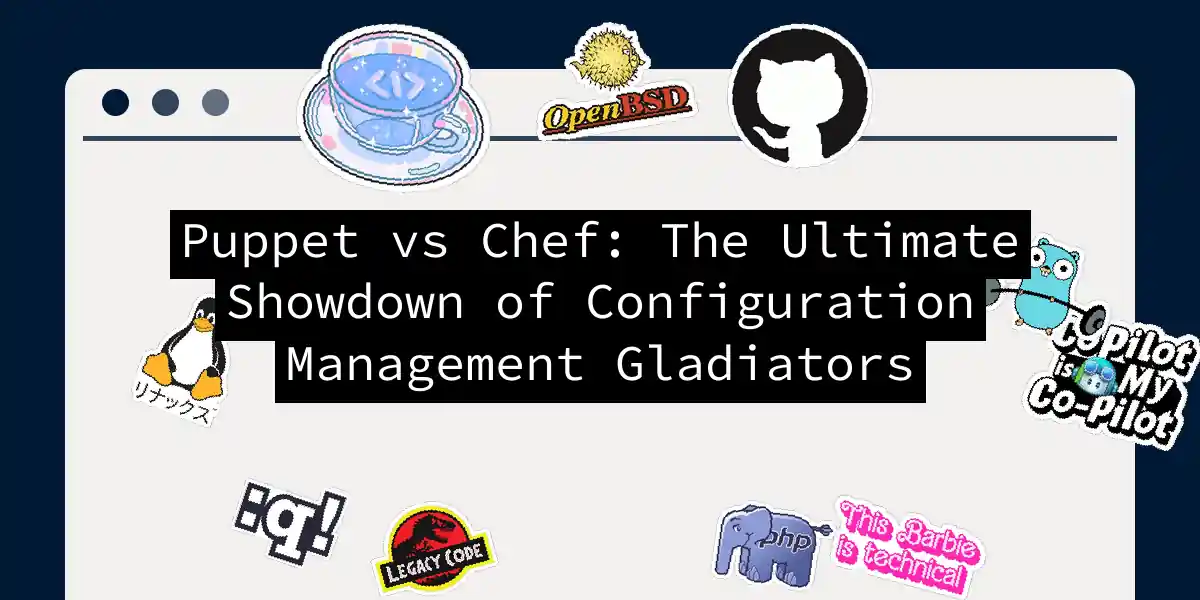Picture this: you’re trying to herd a thousand caffeine-addicted cats through a laser tag arena. That’s what managing server configurations feels like without proper tools. Enter Puppet and Chef - the digital equivalent of catnip and laser pointers. Let’s dissect these DevOps darlings with surgical precision (and maybe a dad joke or two).
Architecture: Master of Puppets vs Kitchen Nightmares
Both tools follow master-agent architecture, but their implementation reads like different cookbooks:
Puppet’s workflow is like a strict ballet instructor:
- Agents phone home every 30 minutes
- Master serves configuration catalogs
- Agents apply changes and send performance reports Chef’s kitchen operates more like a reality cooking show:
- Nodes periodically “converge” with the server
- Chef-client executes run lists
- Nodes self-report their state like overeager contestants Pro tip: Puppet’s HA uses active/passive replication, while Chef employs three active nodes - choose your redundancy flavor like coffee (black vs triple shot).
Language Wars: Declarative Poetry vs Procedural Puns
Puppet’s DSL: The IKEA Manual Approach
# apache.pp
package { 'apache2':
ensure => present,
}
service { 'apache2':
ensure => running,
require => Package['apache2'],
}
(“Install shelf, then attach legs” - but for servers)
Chef’s Ruby: The Masterchef Recipe
# default.rb
package 'nginx' do
action :install
end
service 'nginx' do
action [:enable, :start]
end
(“First, preheat oven to 180°C. Then, beat servers into submission”)
Battle Royale: Feature Faceoff
| Category | Puppet | Chef |
|---|---|---|
| Learning Curve | Gentle slope | Cliff with Ruby vines |
| Scaling | Enterprise-ready | Needs recipe tweaking |
| Reporting | Built-in dashboard | Requires third-party tools |
| Community | 650+ modules | 500+ cookbooks |
| Windows Support | First-class citizen | Grumpy neighbor |
When to Choose Your Fighter
Puppet shines when:
- You need to onboard sysadmins fast
- Large enterprise environments need governing
- “It worked on my machine” isn’t an acceptable excuse Chef’s secret sauce:
- Developers want programmable infrastructure
- You already have Ruby wizards on staff
- “But what if we…” is your team’s motto
Hands-On: Deployment Speedrun
Puppet Quickstart (30 seconds or less!)
# On agent
sudo puppet agent --test --server puppetmaster.example.com
# On master
puppet cert sign --all
Chef Boostrap (Gordon Ramsay edition)
knife bootstrap 192.168.1.100 -N web01 -x chef -P p@ssw0rd -r 'recipe[nginx]'
(“IT’S F****** RAW!” - Chef when nodes aren’t converging properly)
The Ultimate Question: Which Tastes Better?
After extensively licking both tools (metaphorically speaking), here’s my take:
- Puppet is your reliable sous chef - follows recipes precisely
- Chef is the mad scientist - creates explosive new flavors Choose Puppet if you want guardrails. Choose Chef if you want a programming playground. Or do what I did - use both and watch them fight like Godzilla vs Kong in your CI/CD pipeline. Final pro tip: Whichever you choose, remember - automation is like comedy. If you have to explain it, it’s not working. Now go forth and make those servers compliant!
